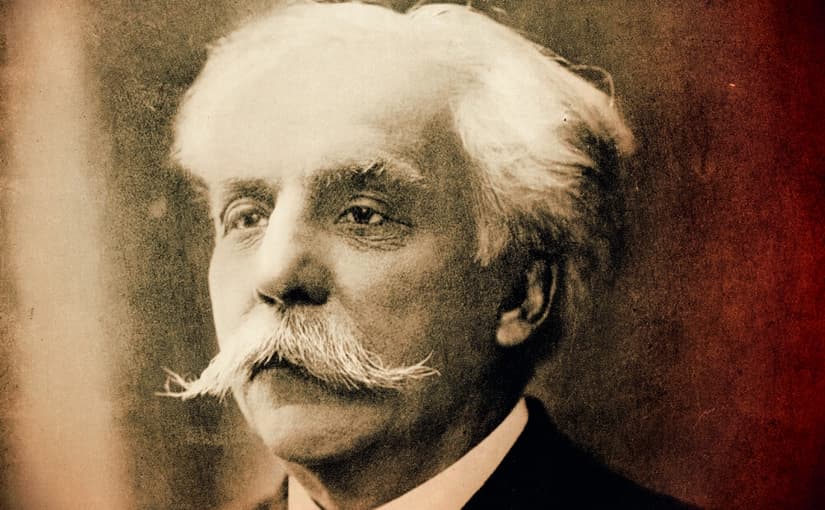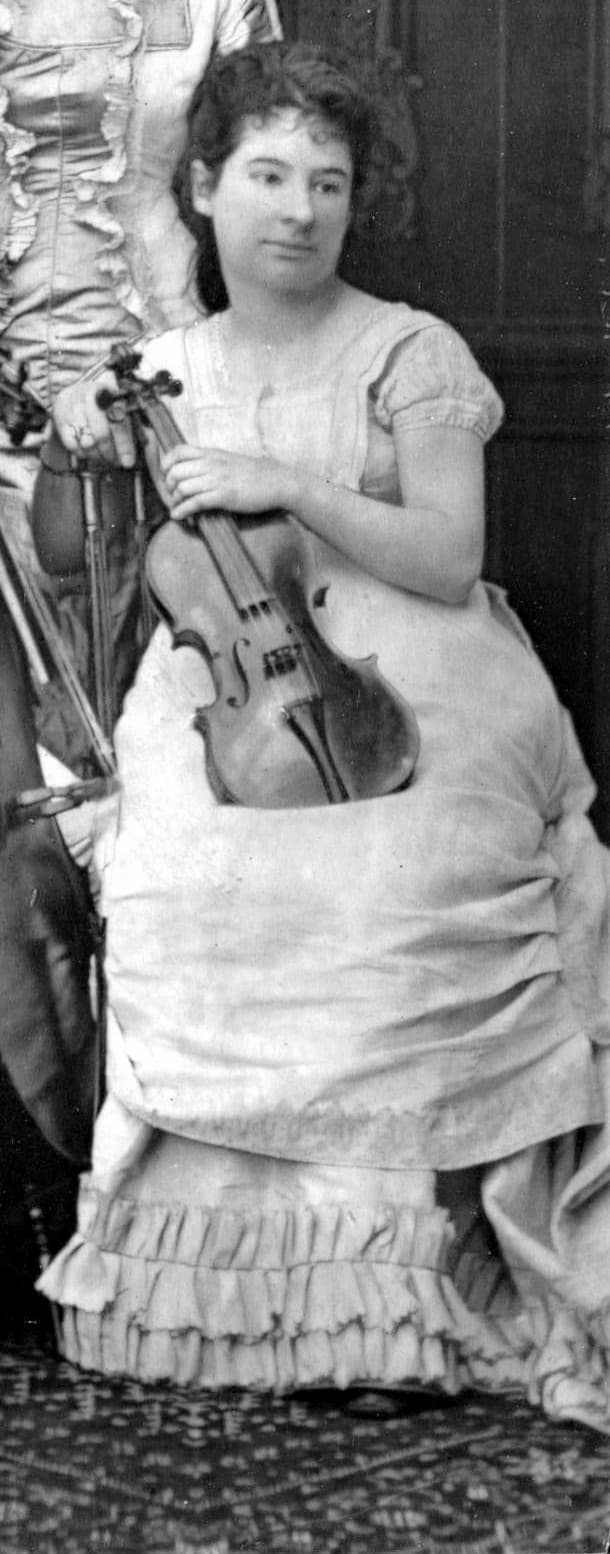When I was a little girl, I heard Gabriel Fauré’s famous Pavane in an arrangement for two pianos on a classical music compilation disc. From the very first notes, I was taken by its elegant restraint. I listened to the Pavane over and over again and started teaching myself a piano arrangement, too.

Gabriel Fauré © Pianodao
The music somehow conjured a very specific scene for me. In my mind’s eye, I could see a nineteenth-century woman holding a parasol and walking on the deck of a steamship, her hoop skirts swaying as she pauses to look out over the railing. Who might this woman be? Where is she traveling to? I don’t have any answers to those questions besides that single cinematic image that the music inexplicably conjured. Lots of Fauré’s music evokes similar imagery for me, and I don’t know why. But it’s very special.
Ever since, whenever someone asks me who my favorite composer is, I answer Bach and Fauré. So from a certified Fauré fan, here are five of the pieces that made me fall in love with his breathtaking music.
Requiem
The Requiem has proven to be Fauré’s most popular work, and it’s easy to see why. It’s simple; it’s moving; it’s never saccharine. It avoids texts of fury and judgment. It’s some of the most beautiful music ever written, period.
We don’t know exactly why Fauré composed his Requiem. Although Fauré’s parents died shortly before he wrote it, their deaths don’t seem to have influenced its composition much. “My Requiem wasn’t written for anything – for pleasure, if I may call it that!” he wrote. Regardless of the story of its origin, we can make out the general story: a soul coming to rest in the hazy, mysterious transition space between life and death.
The Pie Jesu is remarkable, but so is the interplay between violin and voice that opens the Sanctus. I come back to this one regularly, especially at Easter or when observing the anniversaries of the deaths of loved ones.
Violin Sonata No. 1
I’m a violin player, so I’m always going to have a soft spot for well-written violin sonatas, and this one is definitely that. Fauré wrote it when he’d just turned thirty, and it was one of his first great successes as a composer. Violinist Marie Tayau gave the public premiere in 1877, and Fauré was thrilled. “The success of my sonata surpassed by far all my expectations!!!” he wrote. “As to my performer, I will never be able to express adequately how she made my sonata her own, how she put her heart and spirit into playing it… Mademoiselle Tayau’s interpretation was perfect.” Tayau’s performance helped the sonata to make a splash, and soon many violinists had taken it into their repertoire.

Marie Tayau © Wikipedia
There are so many great moments throughout this sonata, but I have a soft spot for the first movement. It sounds like a portrait of new love: excited, giddy, extravagant, dizzy, nervous, delighted, triumphant, all at once. Which is fitting, given that at the time, Fauré was in love with the woman who would become his fiancee.
Elegie for Cello
Fauré isn’t often interested in direct expressions of emotions. He tends to prefer the insinuation, the intimation, or, at the least, ambiguous mixtures of emotions. The Elegie for cello, however, takes a different tack: it’s perhaps the most directly emotional he ever gets in his entire output, and that emotion is anguish.
It starts with a somber, heartbreaking opening played by the cello. Gradually the accompaniment takes over while the cello seems to weep in the background. Then in the center section, the solo cello’s ruminations grow louder and louder, faster and faster, until it restates the original theme in a shriek of despair.
Fauré’s fiancee Marianne Viardot called off their engagement in 1877, and apparently Fauré never really recovered. This Elegie was written in 1880, and it’s tempting to imagine this piece as the soundtrack to a breakup.
Chanson d’Eve for Voice
This song cycle of ten melodies was composed between 1906 and 1910. As you might guess from the title of the cycle, these songs are about the emotions and experiences of Eve in the Garden of Eden, in a time and place where everything is new and fresh and magical. The story has an added dimension in that we the listeners know Eve will soon be banished from paradise, forever removed from everything she finds to be so intoxicatingly beautiful.
I don’t know why, but this song cycle affects me like no other music I’ve ever heard. Something about the music combined with the way the French language sounds is so beautiful, it hurts my heart to hear. But simultaneously, I can’t resist it. Which, I suppose, is a fitting reaction to a song cycle about the Garden of Eden.
My favorite song of the ten is the first one: “Paradis.” The supportive, poignant piano accompaniment combined with the angelic voice is just mesmerizing from the very first bars all the way through.
Gabriel Fauré: La chanson d’Eve, Op. 95 (Sarah Connolly, mezzo-soprano; Malcolm Martineau, piano)
Ballade in F-Sharp Major
This piece always reminded me of late afternoons in summer. It sounds like how leaves look when they’re rippling in the sun and wind, and so many shades of green are visible.
There are multiple versions of the Ballade to enjoy. One is for solo piano, but another is for piano and orchestra. I’m partial to the latter. There’s something so satisfying about the contrasts between the piano and strings. But either version is worth a listen.
These five pieces by Fauré are not necessarily his best; they’re just the first five that came to mind when I thought about how I fell in love with his music. So when you’re finished checking out these, and if Fauré’s language appeals to you, keep exploring. There are so many gems out there that you will love just as much as these!
For more of the best in classical music, sign up for our E-Newsletter

